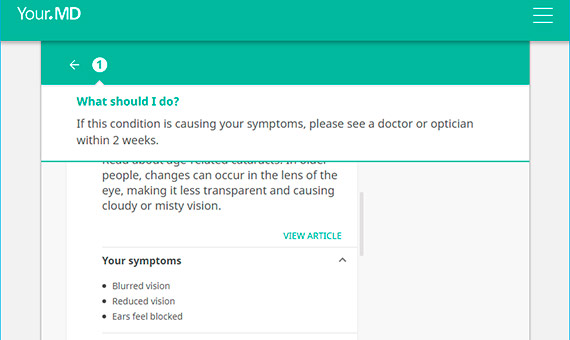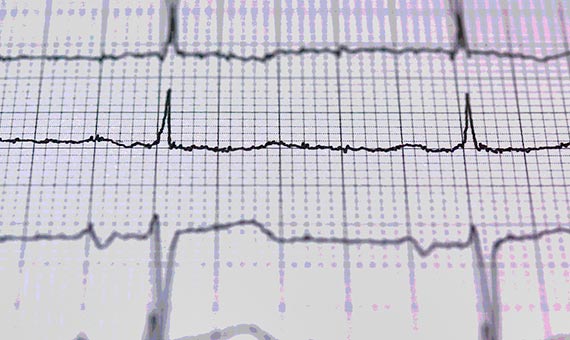The Growth of the AI Healthcare Industry
There are many significant indicators of the rapidly increasing growth of AI applications. First, the number of start ups providing AI support to healthcare providers has escalated [1]. There have been over 100 healthcare start-ups using machine learning and AI over the past 3 years, offering support in everything from remote patient monitoring, drug discovery, image diagnostics, and much more. According to a 2016 report from CB Insights [1], about 86% of healthcare provider organizations are currently using AI in some way. Furthermore, this is likely to rise substantially during the next decade. In the UK in September 2017, the NHS England Chief Executive told the NHS Health and Care Innovation Expo [2] that major AI innovations were in the pipeline. He also said that AI and machine learning is being, and will be, used in many areas including dermatology and pathology to improve clinical care.
By 2025, AI systems could be involved in everything from population health management, to digital avatars capable of answering specific patient queries [1].
Current Applications of AI in Healthcare
AI has been used in the healthcare industry for many years. Knowledge based expert systems for medical diagnosis were being used in the1980’s [3]. Nowadays, the following applications are in common use:
- Virtual Assistants normally describe personnel who can provide remote and instant support for all kinds of business service – such as expert technical help, administrative support, or creative suggestions, and so on However, technological replacements that use AI are now emerging. For example, Nuance software [4] is an example of an AI based virtual assistant program that can enable conversational dialogues with patients and clinicians. Its purpose is to augment interactions between patients and clinicians, thus improving the patient experience and reduce the physician workload.
- Chatbots are programs that engage in conversation with humans, and have been around for some time. Amongst the first of these was a program called ELIZA that simulated conversation with a psychotherapist written in the 1960’s. Chatbots have improved enormously in recent years and are now used in many online decision support domains. They are all available online, and have many uses, including: diagnostic support by checking patient symptoms, safe drug advice systems, and nursing support. For example, Your.MD is a free online AI assistant to enable users to get self-help that covers diagnostic support, safe health information, location of GPs, and so on.
- Healthcare Monitoring devices that use AI techniques are now in widespread use. They can be used as remote patient monitoring for health indicators, such as post-operation heart activity, patient weight, and so on. Wearable devices, similar to wristwatches, such as those of FitBIT commercial fitness trackers, are now commonly used. AI can be used to remotely determine patient treatment plans, or alerts to provide the user with any concerns. Wearable devices can monitor information related to health and wellbeing, such as the number of steps walked, or the number of calories burned. This could be important to patients seeking to lose weight. AI can then interpret this information to give people greater access to knowledge about their physical condition and thus, encourage patient lifestyle changes.
Future Healthcare AI Applications
The big change in healthcare applications in the future will be the increased use of machine learning techniques. The benefits in, for example, diagnostic applications, are likely to be very significant because machine learning will have a role to play not only in predicting, but also in preventing by early detection, and appropriate treatment by linking known correlations of patient treatment methods. Some medical applications, like the Watson for Oncology system, already uses machine learning, along with other technologies to support cancer detection. It has been in operation around the world for about three years, and was touted as a revolutionary treatment. Although many, including IBM developers, admit that it is still in its infancy stage. The advantages of applications using machine learning technology is their ability to discover new insights from the data, thus moving beyond the traditional limitations of AI. However, the downside of machine learning is that it is predominantly based on black box techniques such as neural networks. As I wrote in a previous article for OpenMind [5], applications that lack transparency would be seen as undesirable –especially in the healthcare domain where understanding advice given is crucial to their acceptance. That is why Explainable Artificial Intelligence (XAI), a project described in this paper, is so important for the future success of AI. There are several emerging AI applications that use machine learning. Including:
- Drug Discovery. Machine learning algorithms are now being used with some success to reduce drug discovery times. For example, the pharmaceutical company Pfizer, announced in 2016 a collaboration that will utilize IBM Watson for Drug Discovery. Pfizer is using IBM’s AI technology on its immuno-oncology research system to help fight cancer by discovering new drugs for oncology. Developing pharmaceuticals through clinical trials is very time consuming – often taking more than a decade – and cost billions of dollars. Using AI to replace parts of the drug discovery process can be faster, cheaper, and safer. Whilst AI cannot completely eliminate all the stages involved in drug discovery, it can help with stages like, finding new compounds that could be potential drugs. It can also help to find new uses for previously tested compounds. Amidst the West Africa Ebola 2014 virus outbreak, a program powered by AI was used to scan existing medicines that could be redesigned to fight the disease. Two drugs were found to reduce infectivity in one day, when analysis of this type generally takes months or years – a difference that could mean saving thousands of lives.
- Robotic surgery allows surgeons the means to manipulate agile robotic limbs in order to perform surgeries with precision accuracy in tight spaces (and with less tremors) than would be possible by the human hand alone. While not all robotic surgery procedures involve machine learning, some systems use computer vision (aided by machine learning) to identify distances, or a specific body part. In addition, machine learning is in some cases used to steady the motion and movement of robotic limbs when taking directions from human controllers.

Impact of Big Data on Healthcare

In the last decade, the rise of super fast broadband, cloud computing, smartphones, and social networking have all combined to give us a world awash with data something that is growing at an ever faster rate.
Digital sources including text, sound, images, and video, are all contributing. New techniques are being used for collecting & analysing huge bodies of data to make sense of world in ways that, hitherto, would have been impossible. Having access to large amounts of data have spawned the so-called age of Big Data. This term refers to analytics, underpinned by AI and machine learning techniques that can be executed on large amounts of data to extract new insights. These techniques can uncover hidden patterns and correlations that can provide information to enable better decision making. Furthermore, Big Data techniques can be applied to data that comes from diverse sources.

Big Data became important for the first time in the news with the searches that were made of Google Trends Flu (GTF) in 2009. Users, mostly people affected by the flu, provided this information through Google searches with respect to their flu symptoms./ Image: CC0 Public Domain
Big Data first became prominent in the news with Google Trends Flu (GTF) searches in 2009. Users, mostly flu sufferers, were providing this data through Google searches concerning their flu symptoms.
This led to huge amounts of data being captured, enabling Big Data methods to make accurate predictions – such as where it will spread, and how severe it is likely to be, and those likely to be susceptible. The algorithms that were used for this purpose were developed in 2008 by Google and used 45 query analysis algorithms for classification of the flu. It is estimated that Google deals with 40,000 searches per second, and process more than 200 petabytes per day. This is thousands of times more that the entire US library.
However, there are significant differences between the ways that commercial organisations and healthcare providers can use data. The former is relatively unconstrained in that they can apply AI techniques to data acquired from searches, and data received with other types of user behaviour, such as social networking. Whilst the latter is highly regulated throughout much of the world to preserve confidentiality of patient data. This can lead to potential conflict. For example, in July 2017 [6], it was revealed that the UK NHS, shared details on about 1.6 million patients with Google’s DeepMind division during the early stages of an app tested for identifying acute kidney injury (AKI). The information was used to develop an app that would diagnose and detect when patients are at risk. However, the NHS and DeepMind were censured by the UKs Information Commision (ICO) for failing in some aspects of data protection – partly for failing to inform patients how their data was going to be used.
Conclusions
A bright future beckons for the use of AI in healthcare. However, in a domain like healthcare that involves the use of patients and their data, there is little room for error. This means that healthcare providers, and third party suppliers, care will need to be taken regarding the use of patient data. Also, AI is still in its infancy and this might mean that in the short-term, AI applications may have to be confined to providing an advisory, rather than an executive role. This might mean that, for example, that the use of Chatbots, might be restricted to non-vital tasks. But a more important consideration than this is transparency of how these systems work. However good they may be, their acceptability will count for little unless clinicians, and other healthcare practitioners, understand what has led them to their decision making advice.
Keith Darlington
References
- [1] https://www.cbinsights.com/research/artificial-intelligence-startups-healthcare/
- [2] http://www.reform.uk/wp-content/uploads/2018/01/AI-in-Healthcare-report_.pdf /Report Title: Thinking on its own: AI in the NHS
- [3] https://onlinelibrary.wiley.com/doi/pdf/10.1002/sim.4780040311
- [4] http://www.healthcareitnews.com/news/nuance-rolls-out-ai-virtual-assistant-healthcare
- [5] https://www.bbvaopenmind.com/en/explainable-ai-systems-understanding-the-decisions-of-the-machines/
- [6] http://www.bbc.co.uk/news/technology-40483202
Comments on this publication